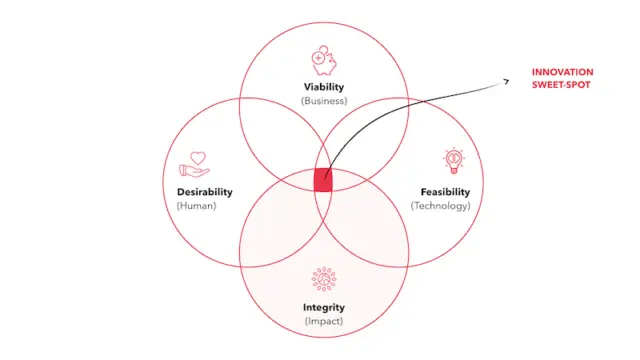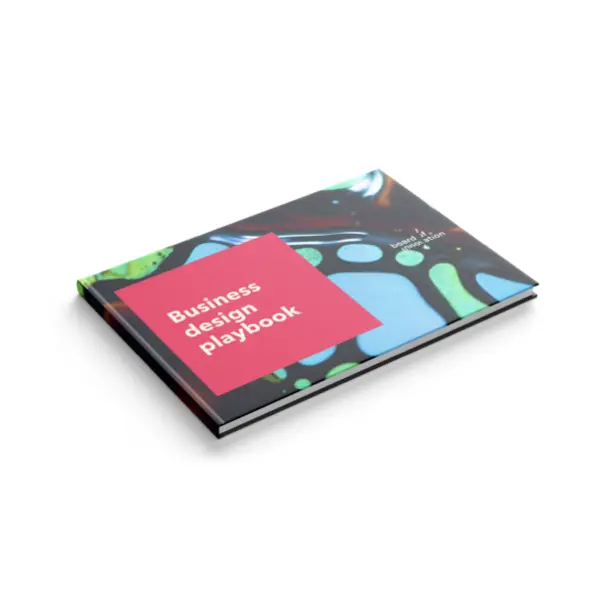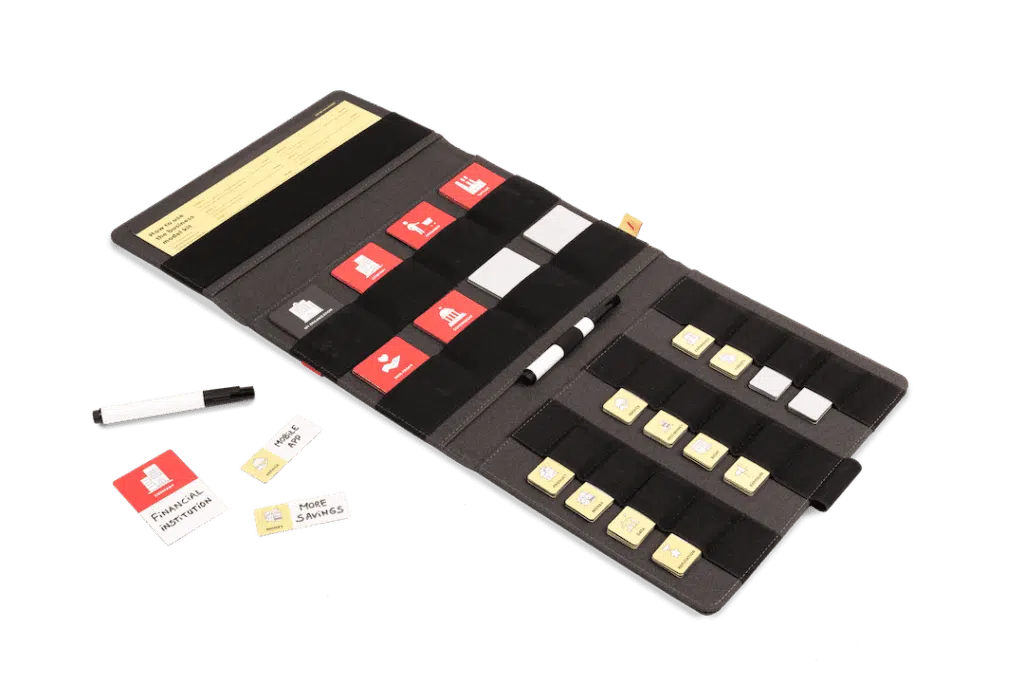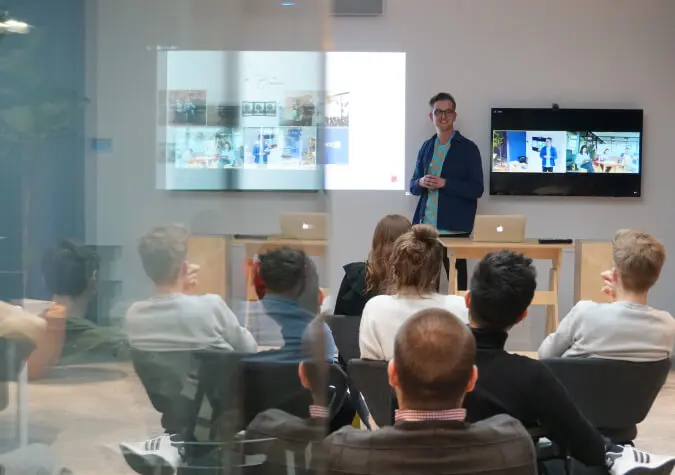What is business design, really?

In short, business design is the design of business. It incorporates design thinking and similar approaches that put the customer at the center of the design process, but business design goes further by focusing on profitable business models.
Business designers ensure that great business ideas can make your organization money and contribute to its growth over time.
Business design emerged as an approach because, following the widespread adoption of customer-centricity in the design of products and services over the past decade, many innovation teams found themselves struggling to demonstrate return on innovation. They failed to commercialize their designs in a way that would contribute to the growth of the organization over time. The problem was that though they confirmed people wanted the solutions they designed, many innovators failed to ensure users would pay for them. Business design approaches overcome this problem by bridging the customer desirability and business-model viability phases.
It can be employed to solve key business challenges. It does so by generating many new solutions to known problems and then designing ecosystems that deliver and capture value for both your organization and its customers.
Depending on your needs, business design might involve various formats (such as a business design sprint, business design accelerator, or entrepreneur-in-residence program).
Lastly, business design and business modelling are ideally applied with positive social and environmental impacts as a key component. Prioritizing integrity is essential for any business to be truly future proof in this day and age (in fact, we proposed a redesigned innovation sweet spot to incorporate just that).

Download our free business design playbook
Develop, test, and grow new business ideas in as little as a few months. This complete business design guide provides all the tips and tools you'll need.
What is business design, really?
The role of a business designer is to apply customer-centric design methods and tools to prototyping, developing, and validating new business models.
Business designers work by extending the customer-centric nature of design thinking to the business viability phase of the innovation process. They apply design research methods such as ethnography (studying people and their environments) and using abductive reasoning (by drawing key insights from observations).
Business designers are often part of cross-functional teams consisting of a mix of people from R&D, sales, marketing, technology, and HR – to name a few. Diverse perspectives in teams result in better ideas, critical thinking, and disruptive outcomes thanks to the different lenses through which the team views the solutions. This is especially important in business-model value exchanges where you need to consider a variety of different perspectives and needs.
The role of the business designer is to ensure that customer centricity stays at the heart of a new innovation project moving forward. This is done by preventing the ‘business as usual’ mindset from hijacking the transition from human needs to expected business goals.
What do business design projects look like?
Projects that involve business designers look like early stage startups that are emerging from the problem- and solution-fit phases of the innovation process (see phases diagram above).
They tend to know that they are onto something desirable but don’t yet know if the desirability-validated concept can and should move forward yet.
This is because there are more unknowns about how the team will ‘capture value back’ to make the concept economically viable. At this stage, the intrapreneurial team may have recently pitched to senior management and/or customers to receive some incremental seed funding, time, and resources. These typically range from 10-50k EUR/USD for a small team of up to 6 people, over a 3-6 month period, 1 or 2 days per week.
From here, the team has usually been given a mandate to come back with further validated learning evidence. Again to show what they know, and how they know it, to support the new business model prototype.
It is the role of the business designer to see the project through to the solution-fit and pre-scaling phases – ensuring that each stakeholder is willing to enter into the new business model and is getting more value than they are giving.
What does a business designer do on a project?
A business designer takes on the following roles within an intrapreneurial startup project team:
- Switching between their design and business mindsets as needed
- Translating customer needs and problems through to the business model viability phase of the innovation process
- Understanding the client/user/buyer business strategy, needs, cost structure, competitive landscape, and business-critical must-wins
- Helping teams prototype and iterate new business models
- Assessing the total addressable market and market opportunity capture potential
- Defining new and disruptive revenue model options
- Ensuring each element of the business model fits the desired customer experience
- Building radical value exchanges and external ecosystems across the value chain
- Designing experiments to test and de-risk critical business model assumptions
- Ensuring the project resonates with all internal stakeholders, speaking the right languages across the teams and departments, which is essential to move it forward
- Building go-to-market experimentation roadmaps and plans for new business models
- Seeing projects through to the solution-fit and incubation up to market scaling phases. This tends to happen within business units or as separate organizational entities entirely

Looking for the right business model?
Explore your options and pick the best solution with our business model kit.
What does business design achieve?
Business designers achieve several key things when working within corporate innovation teams.
Firstly, they maintain a customer-centric mindset throughout the customer desirability and business-model viability phases. They’re always ensuring the end-user is top-of-mind.
Secondly, they protect the radical or disruptive concept and business model from being evaluated (and killed) by the ‘traditional,’ often slow and painstaking, way in which the organization approaches developing the business case. They cut through the red tape (or simply skirt around it).
In enormous, decades-old organizations with multiple stakeholders at play, business models tend to get created slowly in detailed 3-year Excel spreadsheets, built upon:
- gut feelings
- politics
- rules of thumb
- egos
- hierarchies (or a mixture of all five)
The business designer ensures this doesn’t happen by continually asking two key questions moving forward: what do we know? And how do we know it? This is also known as evidence-based learning.
This approach gives new disruptive business models – which can be risky – a better chance of being implemented because there is concrete evidence to support the hypotheses and assumptions behind them.
This means that new sources of value creation and capture (approaches to making money for the company that haven’t been tried before) can survive budget cuts and actually make it to market.
Bringing such potentially profitable new sources of future growth to market will help ensure the strength and survival of the organization going forward.
The evolution of business design
At Board of Innovation, we’ve seen the natural evolution of the innovation and business design field. The recent trend is now leaning towards the business-model-viability phase of the innovation process (ensuring it will make money).
User-centric design thinking is becoming embedded as standard in organizational capabilities. It gets invested in after setting up Agile implementation programs, but customer centricity doesn’t ensure profitability. So many organization have a gap in the innovation process – that is business model innovation.
Once business model innovation is also embedded as a core capability in your organization (alongside Agile and design thinking), your internal startup teams will have an end-to-end de-risking engine in place.
Deploying it will enable them to tackle risky, uncertain projects that have the highest potential to unlock new future growth.
Why design thinking isn’t enough
All too often we’ve seen organizations invest heavily in iterative implementation capabilities (Agile). They then expect unicorn businesses to just emerge.
But they don’t feed their new implementation capability with the right kinds of de-risked projects from the outset – this is where design thinking is essential.
The next capability bottleneck is around business model innovation. This is where business designers come in and why they are so valuable to employ.
Business designers bridge the gap between design thinking and Agile capabilities. When that’s all in place, they give your organization a fully integrated innovation engine, allowing you to de-risk the fuzzy and uncertain process from strategy through to market implementation.
More and more organizations are offering design thinking training sessions, which end up being wonderful team-building experiences that involve lots of post-its and sharpies. But at the end of the day, these short-term initiatives rarely deliver bottom-line impact and results. In fact, rather than encourage further investment, they can lead to momentum, enthusiasm, and budgets evaporating.
This results in what we refer to as innovation theatre. Why? Because they don’t address the key elephant in the room: business model viability.
This is exactly what business design is there to avoid, by design.
All our innovation programs are designed with business impact in mind. We challenge new client projects that won’t contribute to their business strategy and market impact.

Design profitable businesses
Want to build sustainable businesses that make things customers love? Our business design programs can help.